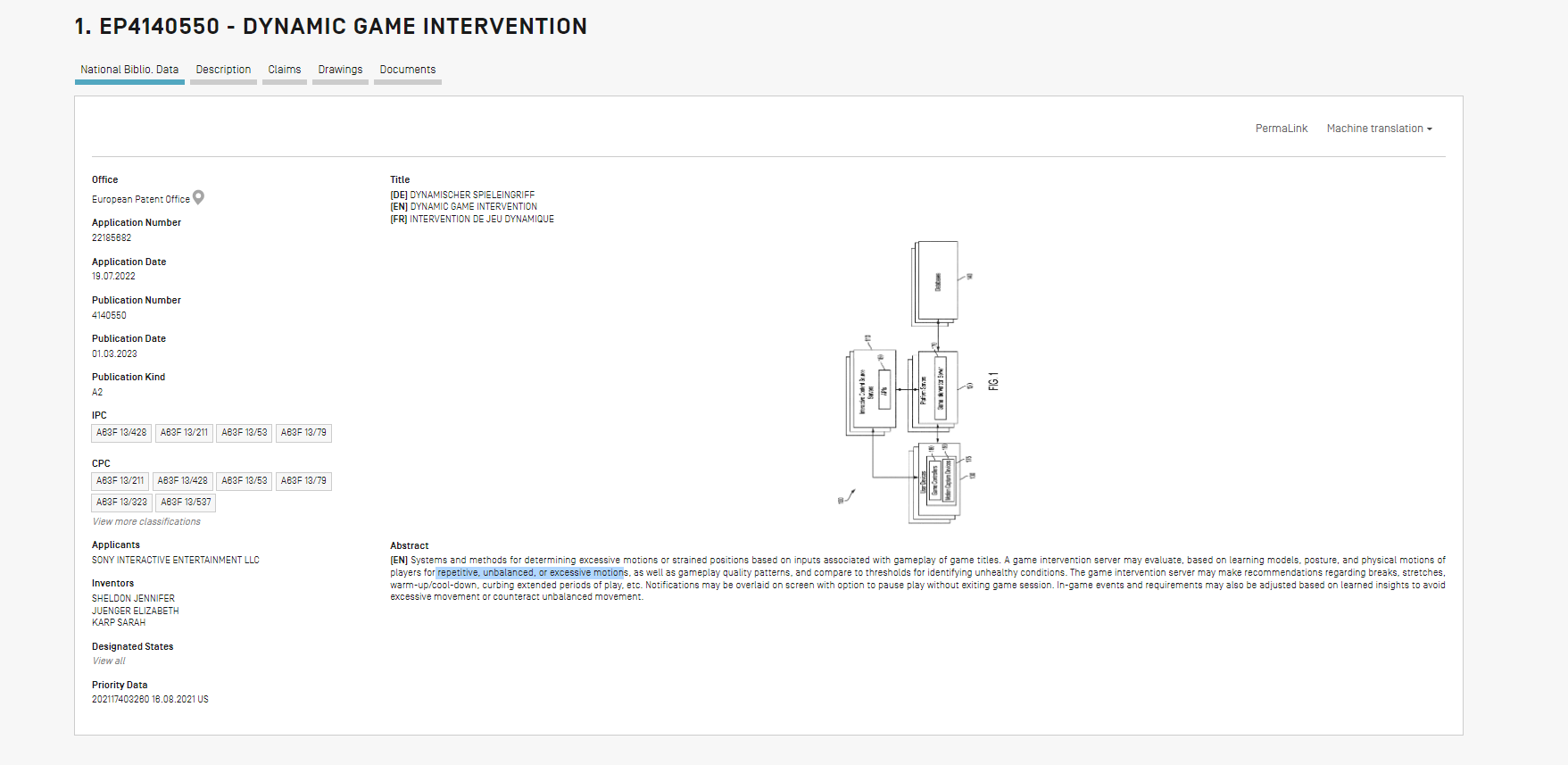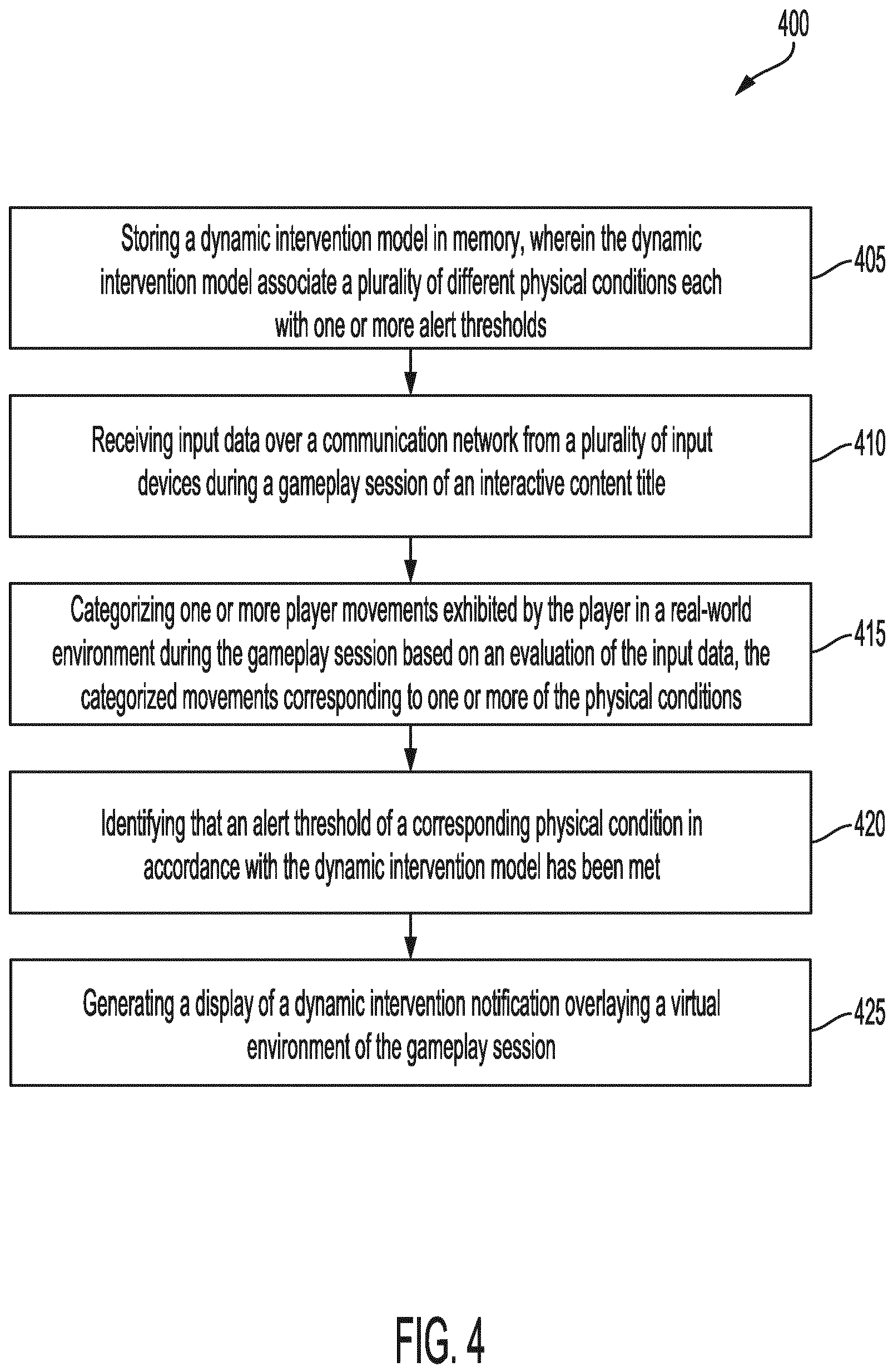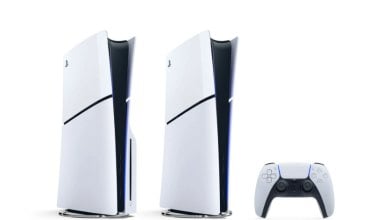
Story Highlights
- A new patent by Sony titled “Dynamic Game Intervention” aims to resolve the issue of bad posture in gaming.
- A game intervention system will be incorporated which can employ learning methods to determine when a player is exhibiting unhealthy movements along with repetitive, unbalanced, and excessive motions.
- The patent was applied last year but was published only recently on Patentscope.
- It bears noticing that the ideas proposed in patents do not always manifest in the industry, so do take the forthcoming information with a pinch of salt.
A patent called “Dynamic Game Intervention” has been filed by Japanese industry giant Sony in recent times, and it targets the betterment of your sitting posture while you’re playing video games. It talks about the application of a system that will compare the physical motions of players to dedicated thresholds for proper movement evaluation and identifying “unhealthy” conditions.

The proposed system will first aim to figure out what the excessive motion or detrimental posture is that the player is subjecting themselves to. This’ll be in light of the “system and methods” and a “game intervention server” that would analyze the gameplay of the title and cross-check it for movement-related health concerns.
Systems and methods for determining excessive motions or strained positions based on inputs associated with gameplay of game titles.”
That process will be carried out with the intervention server setting learning models in place and then taking measures to potentially resolve the pertinent problems. Recommendations will be made to notify players that they should either take a break, stretch their body, or pause playing to “curb extended periods of play.”
A game intervention server may evaluate, based on learning models, posture, and physical motions of players for repetitive, unbalanced, or excessive motions, as well as gameplay quality patterns, and compare to thresholds for identifying unhealthy conditions. The game intervention server may make recommendations regarding breaks, stretches, warm-up/cool-down, curbing extended periods of play, etc.”
Another interesting facet of the patent that comes to light is how it’ll aim to optimize certain in-game events or requirements, possibly QTEs (Quick Time Events) as well, which would implement excessive movement thanks to its learning models, so the player’s posture is not affected for prolonger periods of time. The abstract of the registered patent says,
In-game events and requirements may also be adjusted based on learned insights to avoid excessive movement or counteract unbalanced movement.”
If the system detects a fitting cause to halt your gameplay, a prompt will appear on your screen, thereby pausing your game, but not taking you out of the session itself so no progress will be lost. We’re not sure how the system would adapt to online, multiplayer game sessions though where pausing or going AFK would clearly bring forth undesirable results.
The patent discusses a flowchart as well, detailing a diagram and explaining how the proposed system would actually work out. The gist of it is that a dynamic intervention model comprising different physical movements and conditions would be stored in the memory of the overall system. As soon as the relevant info comes in from gameplay inputs, the received data would be evaluated while categorizing the player’s movement.
If the categorized movements correspond to the unhealthy physical condition, an alert would be carried out to the player’s screen, thereby alarming and notifying that the user’s posture needs to be switched up. The pop-up will appear in the form of an overlay and pause the gameplay session as well, as iterated earlier.
FIG. 4 is a flowchart of an exemplary method for determining excessive motions or strained positions based on inputs associated with gameplay of game titles. Although the example method 400 depicts a particular sequence of operations, the sequence may be altered without departing from the scope of the present disclosure. For example, some of the operations depicted may be performed in parallel or in a different sequence that does not materially affect the function of the method 400.”

The patent. although first applied late back in 2022, has been published in recent times, but the scale of its application is currently unknown. The concept has terrific potential, considering how many of us ignore our body’s posture and keep on playing in the same position for hours on end. An alert of some sort signaling us to change our movement would do a lot of good, especially in the long run.
Thanks! Do share your feedback with us. ⚡
How can we make this post better? Your help would be appreciated. ✍



